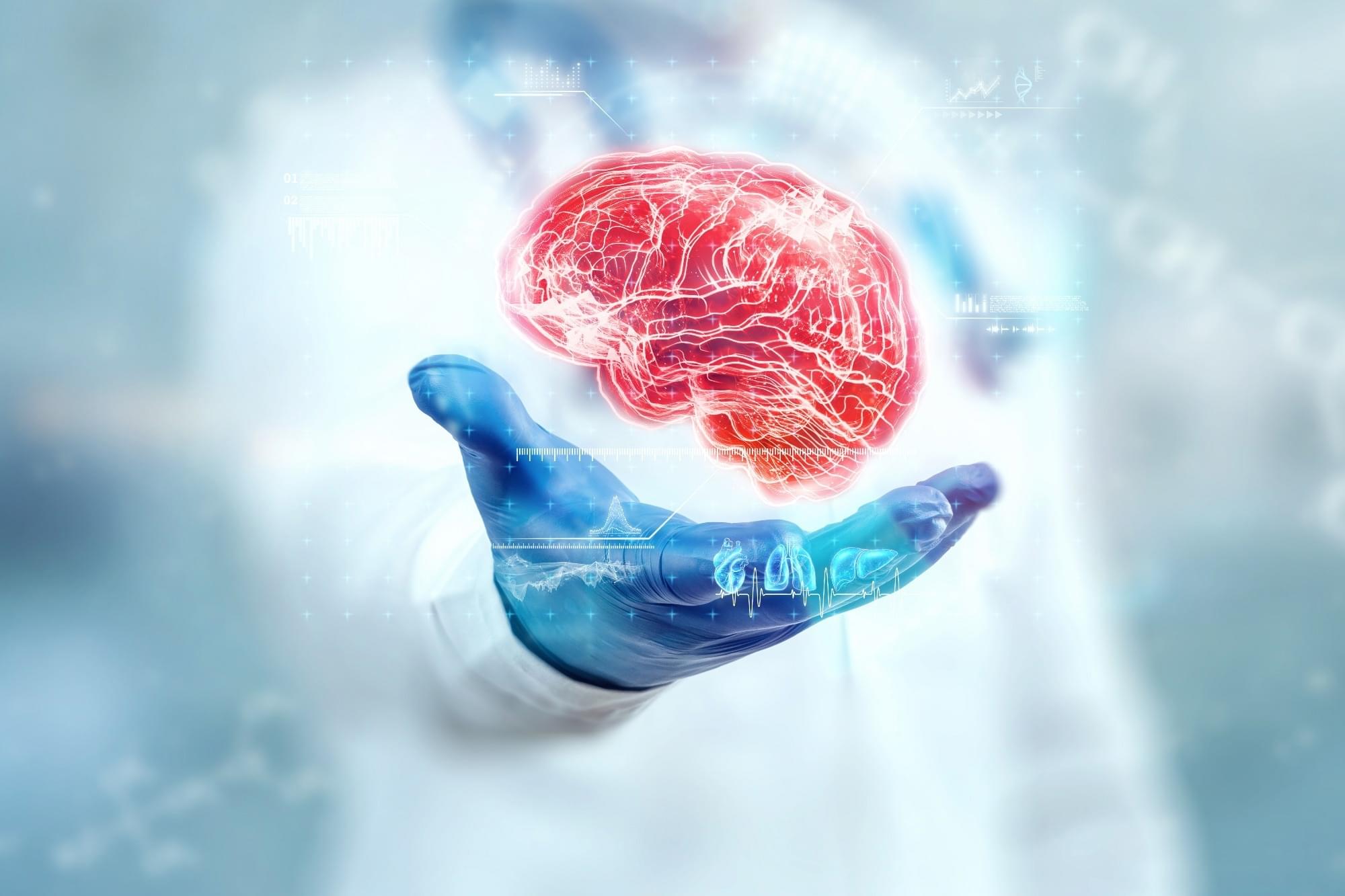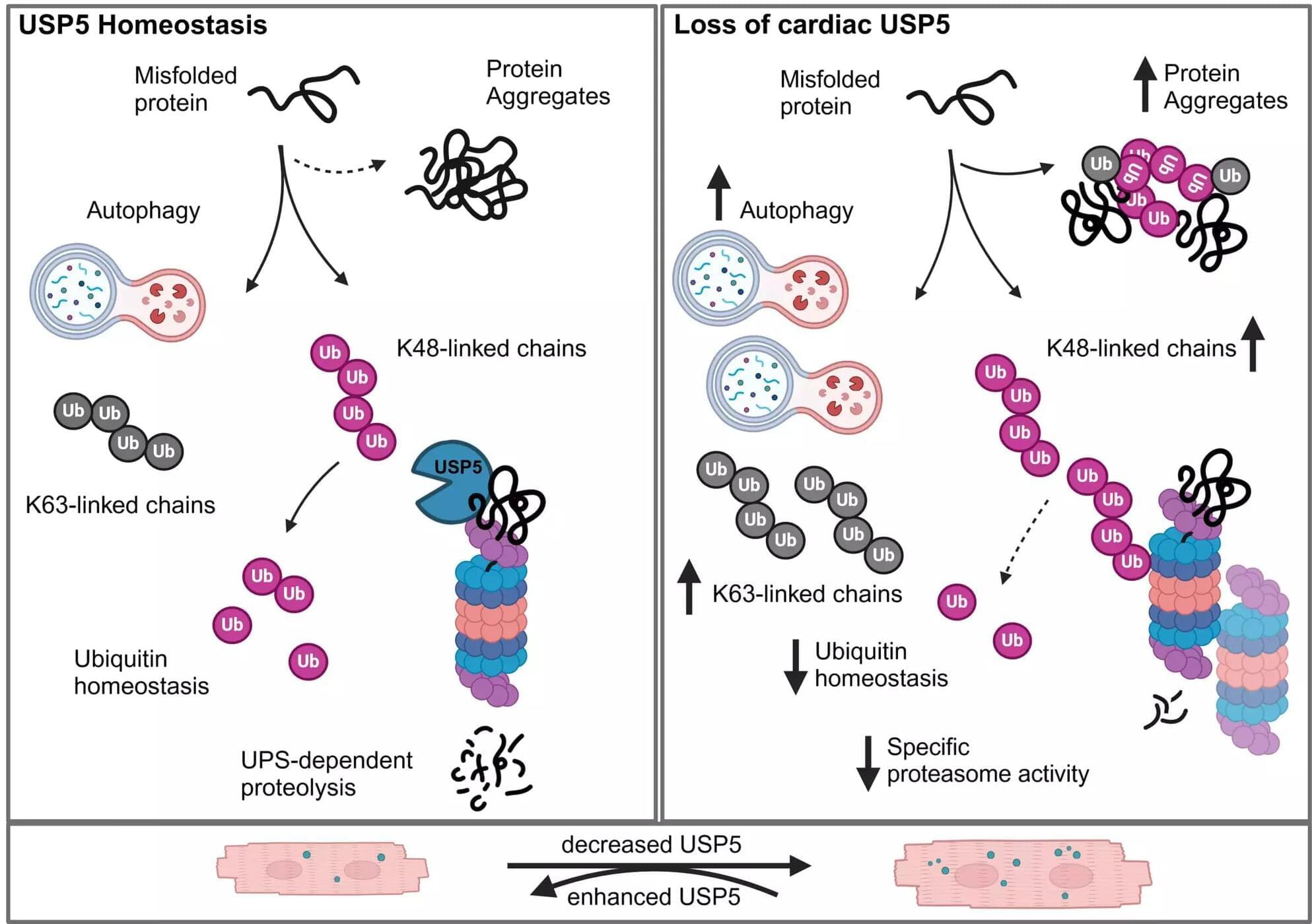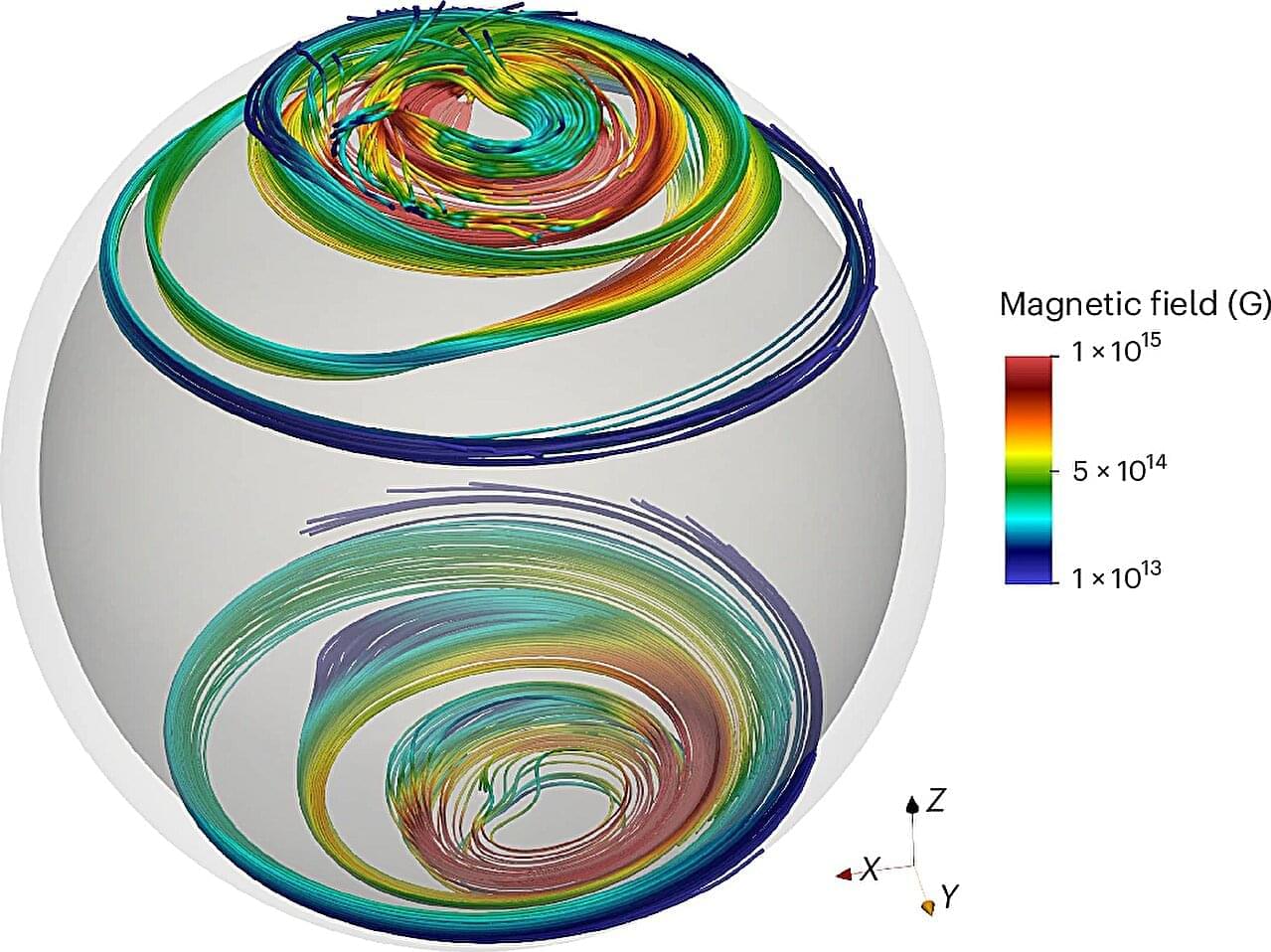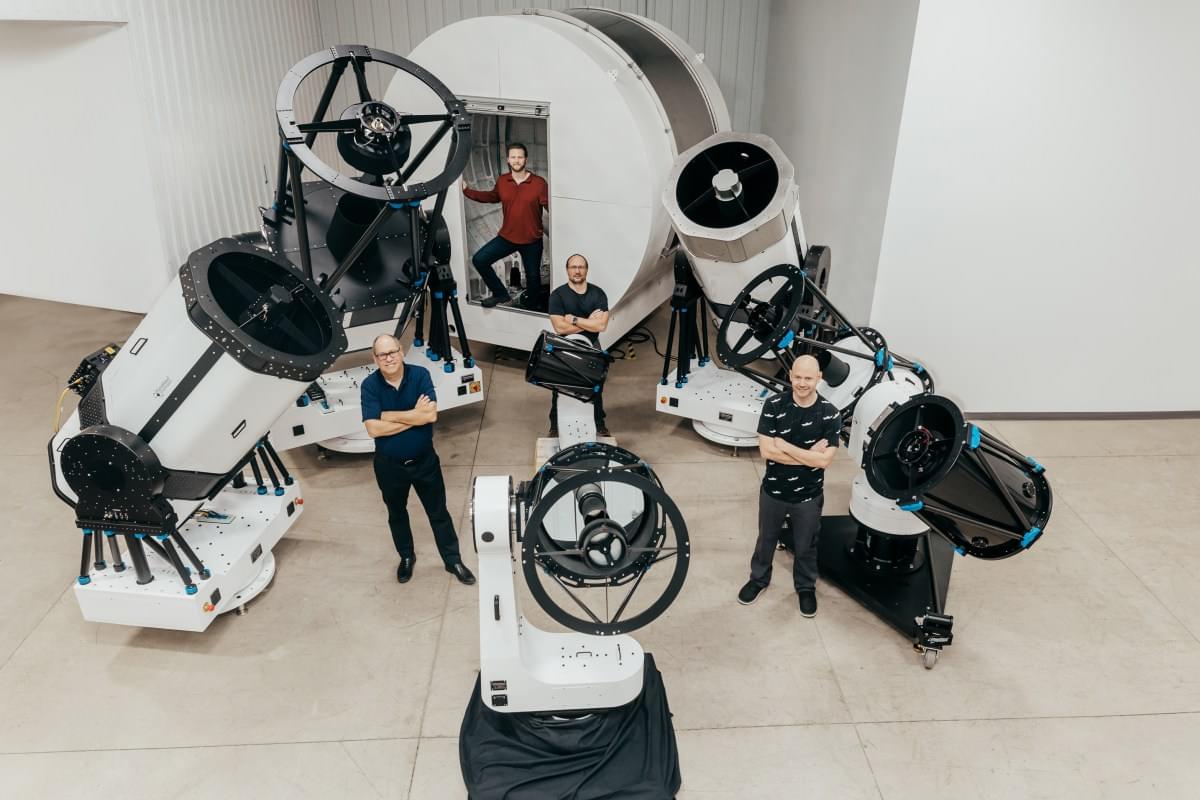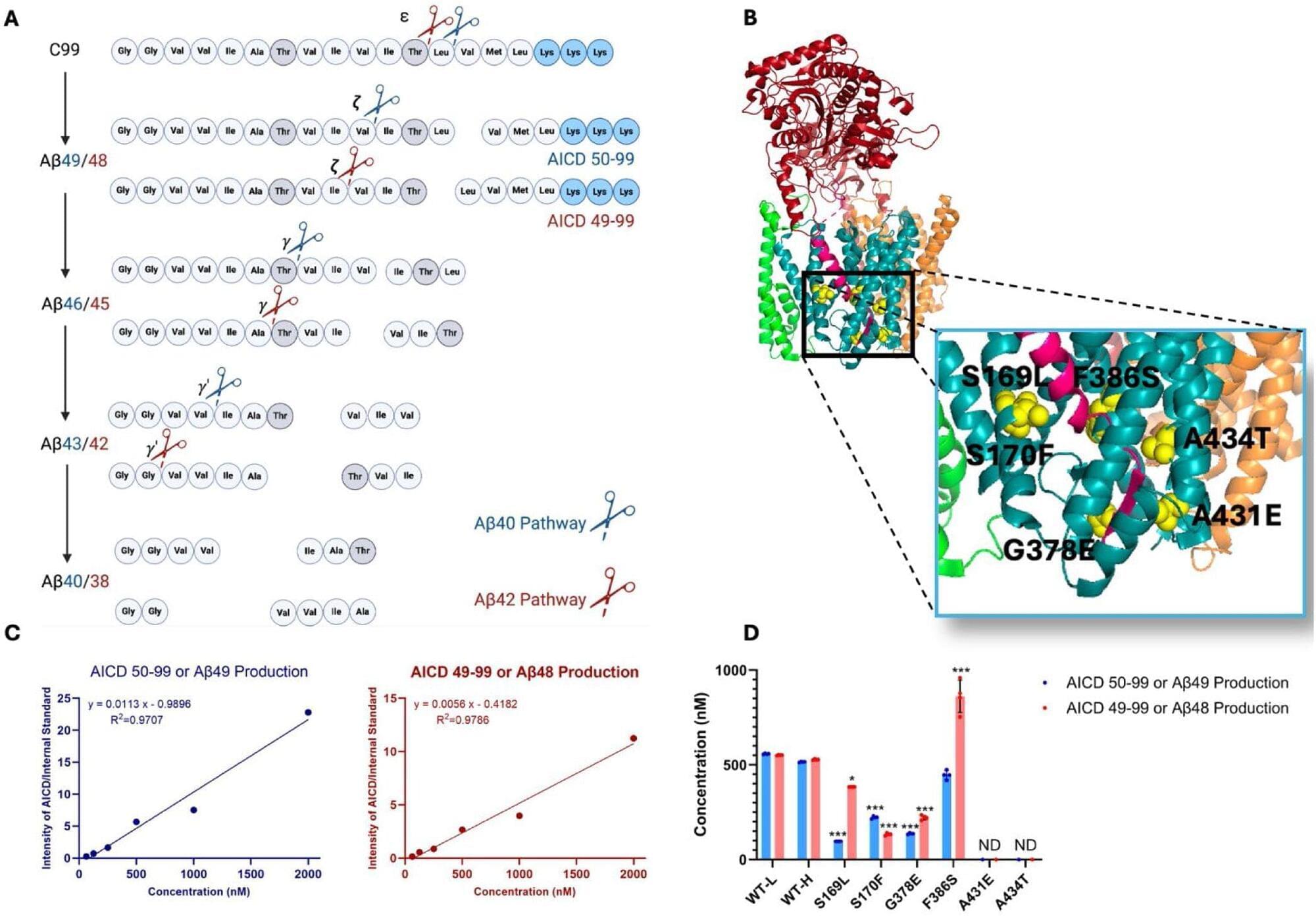Scientists used high-resolution 3D X-ray imaging to uncover major structural and immune changes in the gut of Alzheimer’s disease models, suggesting a potential early biomarker.
There are only four super star clusters in all the Local Group: rarities today. Here’s what the youngest, the just-discovered N79, shows us.
A disrupted protein degradation process in heart muscle cells can lead to a range of severe heart diseases. In the case of dilated cardiomyopathy, a pathological enlargement of the heart chambers, researchers at the Max Planck Institute for Heart and Lung Research in Bad Nauheim have now identified a cause: a low level of the enzyme Ubiquitin-specific peptidase 5 (USP5) leads to an accumulation of Ubiquitin in heart muscle cells and the formation of protein aggregates, which trigger heart diseases. Increasing USP5 levels in heart muscle cells protects the heart from harmful degradation processes, offering a perspective for new therapies.
Dilated cardiomyopathy is a pathological enlargement of one or both heart chambers, including the atria. The resulting restriction of heart function is caused by structural damage to heart muscle cells. The consequence is heart failure, which can lead to death without a heart transplant. Existing therapeutic options can usually not stop or reverse the progression of the disease.
In search of new therapeutic approaches, researchers from the department of Thomas Braun at the Max Planck Institute for Heart and Lung Research have investigated the molecular processes of protein degradation in heart muscle cells. Yvonne Eibach and Silke Kreher, both first authors of the study published in Science Advances, together with their research partners, discovered disturbances in the process that serves the disposal of defective or no longer needed proteins.
An international team of scientists has modeled the formation and evolution of the strongest magnetic fields in the universe.
Led by scientists from Newcastle University, University of Leeds and France, the paper was published in the journal Nature Astronomy. The researchers identified the Tayler-Spruit dynamo caused by the fall back of supernova material as a mechanism leading to the formation of low-field magnetars. This new work solves the mystery of low-field magnetar formation, which has puzzled scientists since low-field magnetar discovery in 2010.
The team used advanced numerical simulations to model the magneto-thermal evolution of these stars, finding that a specific dynamo process within the proto-neutron star can generate these weaker magnetic fields.
Emmy Noether was hailed as a mathematical genius in her own time. And her theorem on symmetry is still driving new discoveries in particle physics and quantum computing today.
By John Gribbin and Mary Gribbin.
Japan introduces the first ‘super solar panel’ that is comparable to 20 nuclear reactors at once. It is called the perovskite solar cells (PSC).
On a clear spring evening in Michigan, the stars aligned — just not in the way Upfront Ventures partner Nick Kim expected.
He’d just led a $9.5 million seed round for OurSky, a software platform for space observational data, and was eager to see what its telescope partner PlaneWave Instruments could do.
But when they rolled out the telescopes that night at PlaneWave’s manufacturing facility, he was stuck waiting.
China also announced an investigation into Alphabet’s Google alleging the American technology giant had violated the country’s anti-monopoly law.
Some of the data collected by this provider is for the purposes of personalization and measuring advertising effectiveness.
An international team of scientists, including researchers from Harvard University and the University of Zurich, analyzed clinical trial results 777 elderly Swiss adults to test the potential anti-aging benefits of supplements and exercise.
While there’s no perfect way to measure biological aging, the researchers used tools that help measure age-related decline in the cells and organs, including factors like brain health and heart health.
They looked at participants who underwent one of eight longevity treatments over three years, including exercising and supplementing omega-3s, vitamin D, or both.
